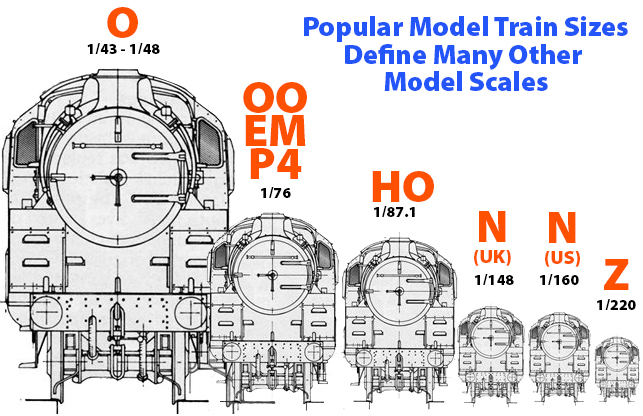Size DOES matter
by Phil Cooper
Firstly, an apology about the last blog which left me traumatised as I told you about my weird phobias. Simon Kohler at Hornby described them as “interesting”. Yes, I’m name -dropping - “Mr Hornby” himself looks in on the blog too. Anyway as I was saying, I was so traumatised recounting the horrendous torture inflicted on me by my brother and his family that I forgot to share the photo of my notice boards. So here it is.
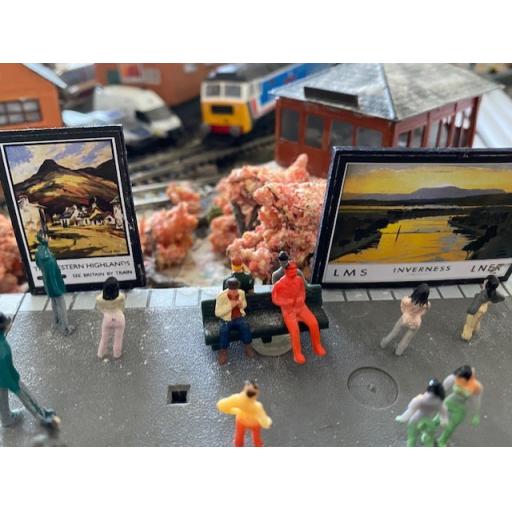
As you can see, these Trackside adverts are so good that my “little people” stare at them all day.
Right, let’s get going and first I have great news for all of us who love European train journeys as Eurostar and Thalys are set to merge. Both companies are owned by the French national train operator, SNCF. The merger was first proposed in 2019 but plans were pushed back by the pandemic. Regular readers and anybody who has read my “Germans Are Weird” blog will guess that I am a Brexiteer so I’m glad our chums in Brussels have , finally, got something right!
I am very optimistic about this new venture especially as there is a growing lobby to ban short-haul (European and internal UK) flights. Hopefully we are about to enter another great age of train travel. As a sprog I used to enjoy flying but now, as almost, an adult I just don’t enjoy it. The main reason is that I can’t see where we’re going! The new high speed expresses of Europe (and UK) are far more comfortable than modern jets. I’ve tried to sleep behind too many people who recline their seats to it’s limit leaving me squeezed up and in a stressful state. A recent trip to New York on an American Airlines A319 was particularly horrendous. Back to the great news though; earlier this month the European Commission approved the merger of Eurostar and Thalys, meaning that travel between Belgium, France, Germany, the Netherlands and the UK will soon all be covered by one train operator.
So, readers of my earlier blog, “Germans Are Weird” will have the chance to see just how weird our “weird” chums are!!! Should be fun.
Before I go on, let me point you in the direction of an excellent website to consult if you are contemplating an international rail trip. It is www.seat61.com and it’s brilliant with masses of information. I strongly recommend it to you. It is maintained by Mark Smith who has a long railway history. And here is Mark sitting on a Eurostar.
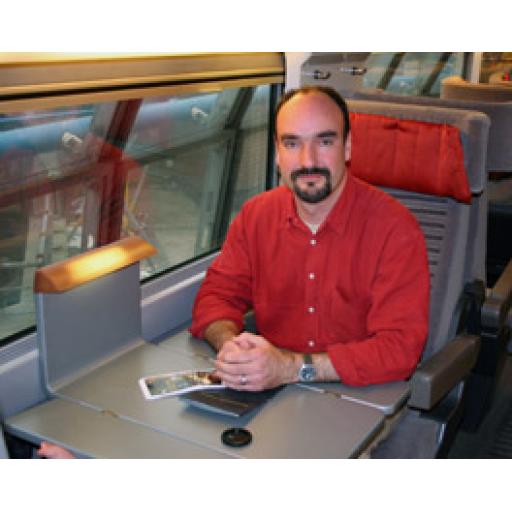
Thalys is a high-speed train operator which currently serves all of the above countries apart from the UK. I travelled on the Thalys service from Brussels to Amsterdam a couple of years ago. The service had started at Paris Gare du Nord and by the time it got to Brussels Midi the train was very full and seat reservations were ignored as we had to fight our way to our seats. The food on offer was also useless so I can’t say I enjoyed the Thalys experience. However I do think it looks great in it’s deep red livery and it would look great on my layout, so come on Simon get on the job.
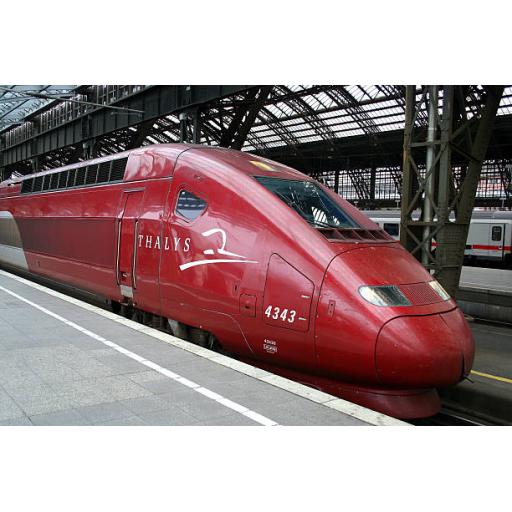
Eurostar, on the other hand, runs services through the Channel Tunnel between the UK and Paris, Lille, Brussels and Amsterdam. A merger would combine the networks, putting a huge number of destinations within easier reach. It will also, I hope, see the German ICE trains at St Pancras. I do like them.
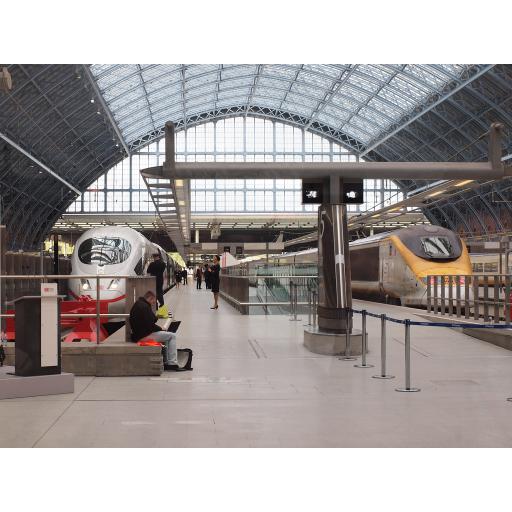
Eurostar and it’s new friend at St Pancras (I can’t wait)
So here’s a bit more about the ICE from Wikipedia:
Intercity Express (ICE) is a system of high speed trains predominantly running in Germany. It also serve some destinations in Austria, France, Belgium,Switzerland and the Netherlands mostly as part of cross border services. It is the highest category of rail and the flagship train of German state railway, Deutsche Bahn. ICE trains run up to 320 km/h (200mph).
So what can train travellers expect from the new, single operator? Well, it’s believed that the new operator will take the Eurostar name. Passengers can also expect more streamlined scheduling, ticketing and loyalty programmes. Not to mention the potential for an enormous network of direct trains. Might we even see Spain’s Ave trains.
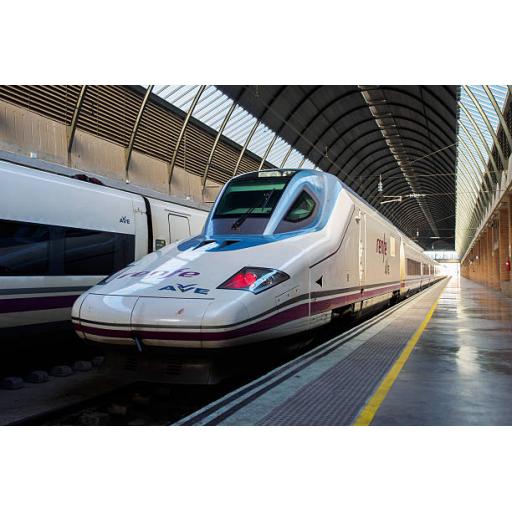
It’s definitely not pretty but it does speeds of up to 200mph and is very shiny.
The United Kingdom is, at last, catching up with our European friends with construction of HS2 under way. The project promises trains capable of speeds up to 250mph. I am dying to see the trains which will “fly” on HS2, something like this. Can you imagine what railway people of the 19th century would think of this. I imagine they’d be, understandably, terrified whereas I think I would be terrified travelling on “Rocket”!
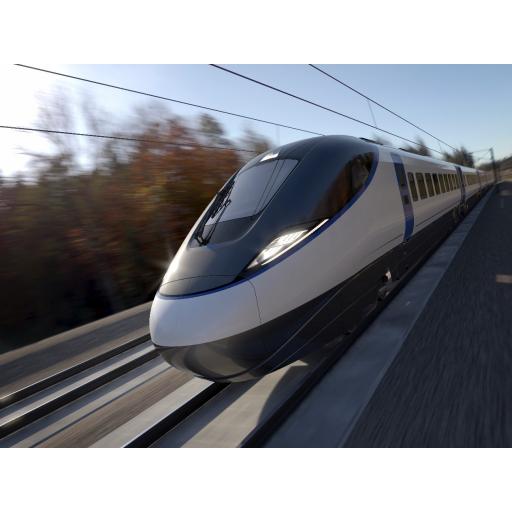
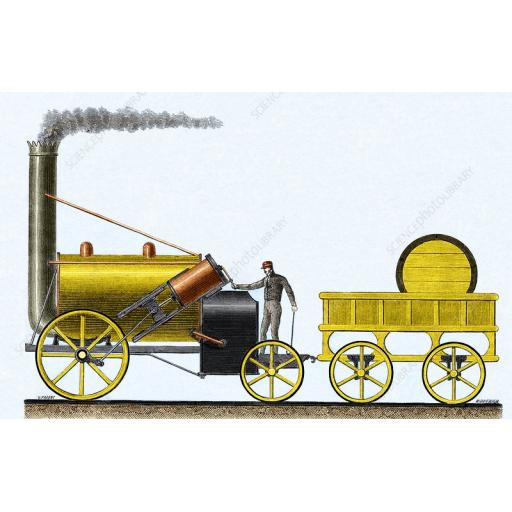
I’m also hoping that this new venture will see British model-makers making more continental trains for sale. And, hopefully they will be in OO gauge. I did, once, buy a French TGV from eBay in HO scale; yet another “runs well” eBay locomotive! Some people say that HO and OO are the same.
They’re not! OK they can both run on OO scale track but if you line up an HO train next to an OO train you will immediately see that HO trains are much smaller. Putting on an OO train next to an HO train looks really stupid. The following image shows the differences.
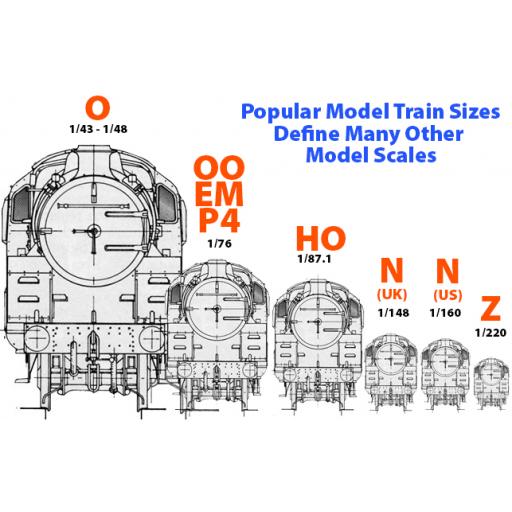
Now let’s look at some new models on the market, Firstly the BR APT-E.
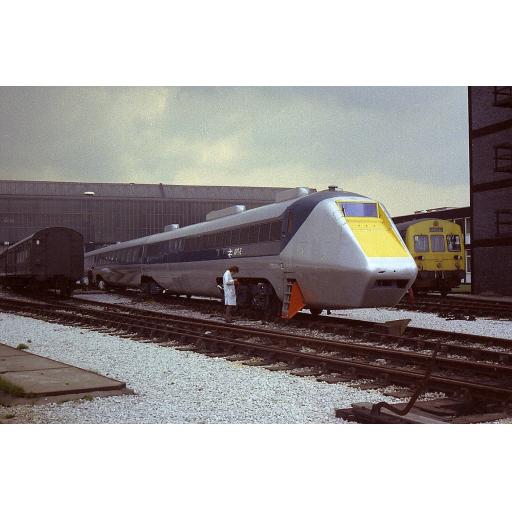
Dark clouds gather over the APT-E!!!!
APT-E. A brief history
By the end of 1970 the British Rail Board began considering the third design phase of the Advanced Passenger Train; the prototype for the full production trains that would incorporate the technology of the APT-E in a practical application. From the outset the pre-production APT project, or APT-P, was considered to be nothing more than a proving prototype for evaluation, prior to the finalised Advance Passenger Train design being authorised for squadron service; the APT-S. Having settled on electric traction for the production APT, the West Coast main line between Euston and Glasgow was the obvious route for conducting testing, being electrified along its length and with some severe curves that curtailed high speed travel. The date for commencement of services was set for 1977 and the Chief Mechanical and Electrical Engineers' Department (CM&EE) design engineers began work in October 1973.
In a move similar to the current situation of the DfT defining design specifications, it was the passenger business of British Rail that decided upon the original configuration for the APT-P; each set was to comprise fourteen cars, with the two power cars marshalled at the outer ends of the sets. It soon became clear that the use of two pantographs, one on each power car, was unsuitable for the OHP wires in place at that time and the use of two power cars in the middle of the train became the only option, effectively cutting the train in half. This created two 1+6 formations of DTS, TS, TRBS, TU, TF, TBF and NDM (Non-Driving Motor), through which passengers could not pass due to the high magnetic fields generated by the electrical equipment contained in the NDM. The NDM was the first vehicle completed for testing in June 1977 and it spent a year on static tests at RTC Derby, as well as dynamic tests on the WCML with a spare HST Power Car from September 1977.
In mid-1978 the power car was joined by the rest of the first half set for testing on the WCML and was unveiled to the press on June 7th but, hampered by industrial action, it was to be February 1979 before various formations of the full train were marshalled to test different aspects of the train. At the end of the year, on December 20, 1979, a new rail speed record of 162.2mph was achieved and by March 1980 all three APT-P trains were delivered and ready for mileage accumulation on the WCML. Having finally achieved full route clearance and with testing indicating that all was progressing to plan, shadow passenger service was set to commence on June 9, 1980 with a daily Glasgow/London return service. A demonstration run on April 18th with a 1+9 set was meant to usher in a new era of high speed rail travel, but a derailment caused by a faulty articulated bogie signalled the beginning of the APT 'jinx' and the postponement of passenger introduction.
Wheelsets had to be rebuilt across the fleet, and reliability problems with the tilt, transmission and braking systems were also exacerbated by the mediocre ride quality. It was also found that failure of the tilting mechanism could result in the APT exceeding its kinematic envelope and potentially coming into contact with an APT travelling in the opposite direction. It was to be Spring 1981 before main line testing could resume and by now media and public opinion was turning against the project, with some individuals in Government and within the British Railways Board expressing their discontent as well. Entering public service on December 7, 1981 at first all went well, but very cold weather in Scotland on December 9th and again on December 11th resulted in the brakes freezing and the APT being taken out of traffic until the summer of 1982.
A year of technical R&D project running followed, before limited passenger running took place across 1983/84 to assess passenger comfort using the full 2+12 sets between London Euston and Glasgow, culminating in a new time and speed record for the 401 mile trip of three hours and fifty-two minutes; an average speed of 103mph. Far exceeding its budget, APT-P had now effectively reached the end of its development programme and although a number of plans had been suggested for the implementation of APT in service, in a number of formations and with varying traction options, the APT-S, APT-R, APT-T, APT-U and APT-V projects never materialised. The fleet of six sets had been reduced since March 1983, parts being cannibalised to keep the remaining vehicles running and at the end of May 1985 the APT-P was withdrawn from service, with the Intercity Development Train (APT-D) continuing until December 1986.
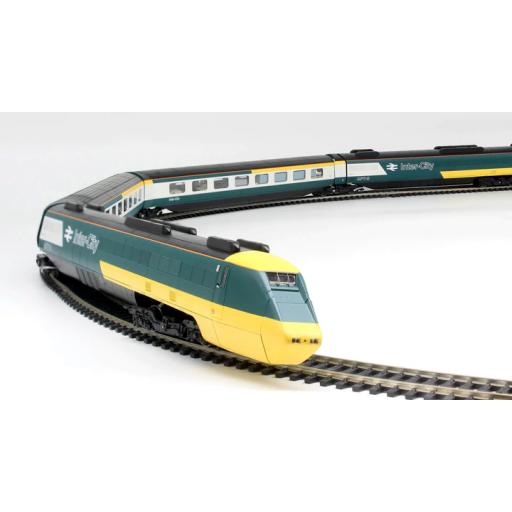
Hornby & Rapido Trains are building models The Hornby 7 car model pack will be available in Summer at £586.99 whereas Hattons are selling the Rapido Trains 4 car model, with sound, for £407.96 which is quite a bargain BUT, I hate the APT-E gas turbine unit. Yes I know it was very advanced and it did pave the way for Class 43s and the various versions of the Pendolino but the APT-E is plain ugly.
However the APT-E had an older, more dignified (in my opinion), brother which was the BR 18000, which was built back in 1948.
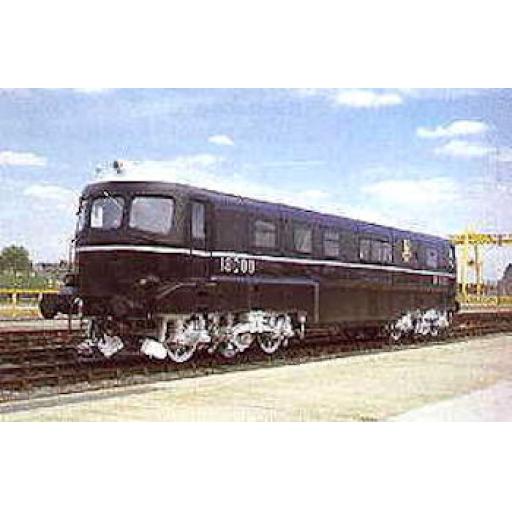
The real thing
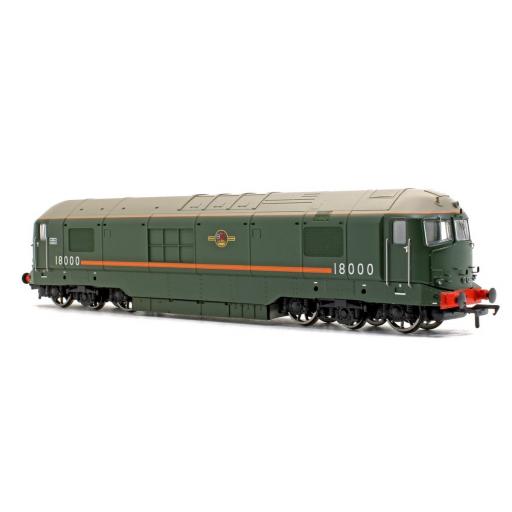
The rather pleasing, well detailed model
I much prefer the Heljan 18000 gas turbine model which is available for about £200 from model shops but, as ever, you should shop around to get the best prices for these models.
Another new model is the Azuma available from Hornby. I really like the livery of this train, especially the “Celebrating Scotland” version available as a 5 car unit for £434.49.
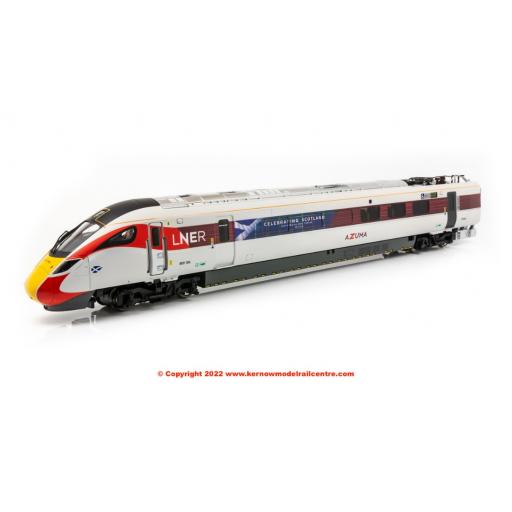
Not cheap but it is beautiful although I hear the real thing isn’t getting much positive criticism!
I was going to leave it there but I’ve just discovered a new problem which has raised it’s ugly head. So, chaps, buckle down and stay calm (hmm that could look good on a tee shirt). Anyway, here you go.
Gentlemen, size DOES matter. In an earlier blog I mentioned about wheel heights on tankers and trucks. This time I’m going to mention other height problems you might come across. (Sorry about the pun) I heard a few of you mutter, “phew”. While some just shouted, “aaaargggh” and collapsed in a heap. (Sorry again) I’m talking about the height of couplings (I used to call them connectors but an eBay seller put me right -they aren’t all second hand car dealers) So make sure your couplings are of equal height when you’re putting your trains together. If they aren’t equally level you may suffer a derailment.
And also look at your track height. This probably won’t be an issue for those of you patient enough to do your own ballasting. I’m impatient and made a huge cock-up (sorry, yet again) trying to ballast my track so had to rip it up and try ballast foam. My advice here is to go for ballasting yourself. It looks much better than the foam. The problem with the foam is that you have to leave gaps on the track where they connect with each other. Those gaps make a difference in height and could lead, once again, to derailment and even worse “dead” bits of track where your loco can lose power especially if your locos are travelling slowly so have no momentum. I’ve tried to solve this problem by cutting tiny strips of cardboard to fit under the gaps.
Yes, it looks terrible and I am now considering trying the real ballast one more time. However I fear I will muck it up again. So, I might have to call on my good friend, Jimbo, who loves to help me with the layout. He loves all the gadgets I have to help me and is actually quite helpful even though he has refused to act as a delivery venue for chocolate bars which Nannybarb has banned from inside our house. Who’s Nannybarb you ask. I’ll tell you all about her in the next blog.
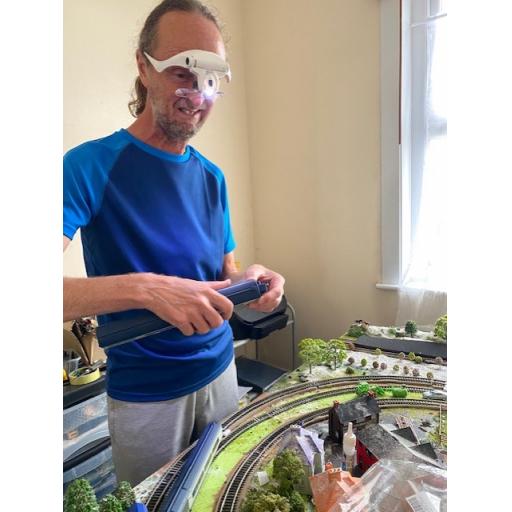
Here is the slightly insane Irishman who, despite being simple-minded, is good company and eager to help. I’ve taught him how to use the glue gun and the heat gun (what is it with Irish blokes and guns)) and here he is with my LED magnifiers trying to put my Eurostar coaches together. He’s not quite mastered the drill yet but give it time and he’ll get there.
Proses have a ballast spreader, which looks helpful, available for about £15. Actually their website, (proses.com) is great. I could spend days on it.
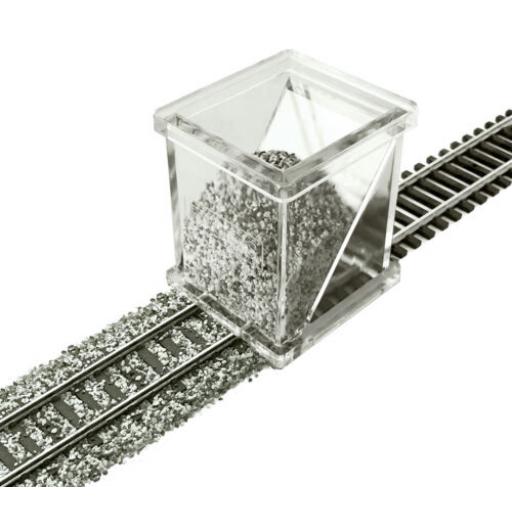
(Ed comment: Well done, no mentions of “the stroke”)

If you would like to read more blog posts from Phil check back every two weeks or sign up to our newsletter to keep up to date on site news or when the blog posts go live.
The views and opinions expressed within the content are solely the author's and do not reflect the opinions and beliefs of Trackside Signs or its affiliates.






